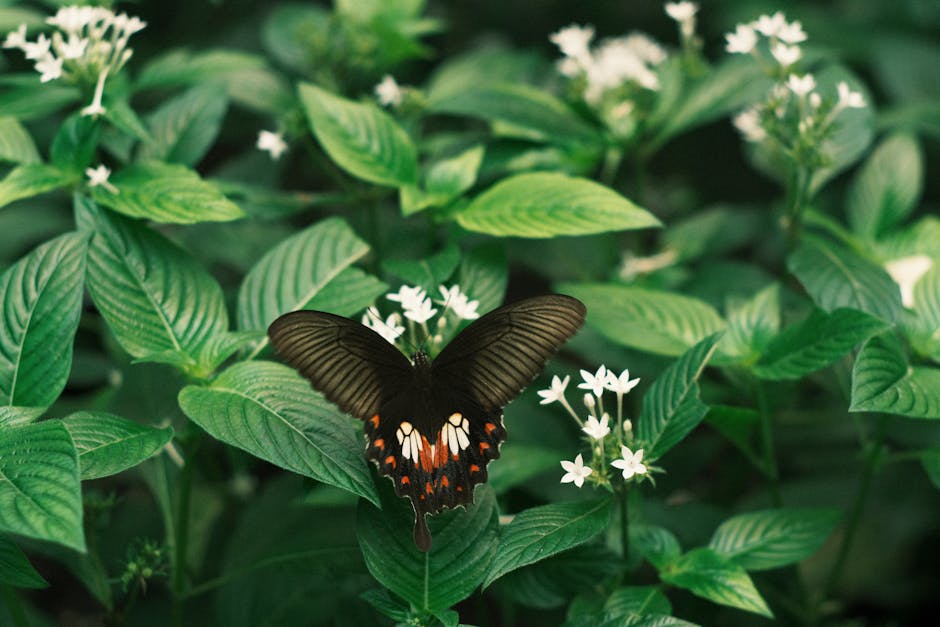
What Lures a Potential Mate? The Power of Pheromones in Insect Control
While looks and charm may sway human attraction, insects rely on a far more primal tool: seductive chemicals known as pheromones. These chemical attractants play a crucial role in communication among insects, often drawing potential mates. Scientists have identified pheromones for over 1,500 insect species, though only a small fraction are used commercially. In this guide, we’ll explore how pheromones work, their applications in pest control, and how you can use them in your garden or farm to manage insect populations effectively.
Understanding Pheromones: Nature’s Chemical Signals
A pheromone is a specific chemical released by insects and other organisms to communicate with members of the same species, often those of the opposite sex. These chemicals travel through air or water to reach another insect, prompting a behavioral response. Typically, pheromones are used to attract mates by mimicking the signals of females, though some serve as warnings of danger. Remarkably, pheromones are effective at incredibly low concentrations—just one millionth of an ounce. Since their discovery in 1959, chemists have synthesized many pheromones in large quantities, enabling their widespread use in pest management, primarily through traps.
Photo by Whitney Cranshaw, Colorado State University, Bugwood.org
Applications of Pheromones in Pest Management
Pheromones have become a game-changer for growers and individuals dealing with regular insect threats. Their ability to lure insects into traps or disrupt mating cycles offers a sustainable alternative to traditional pesticides. Below, we delve into the key ways pheromones are used to monitor and control pest populations.
Monitoring Insect Populations with Lure Traps
One of the most common uses of pheromones is in monitoring traps, often called lure traps. Sticky traps coated with pheromones are strategically placed in fields or orchards before the target insect becomes active. By checking these traps daily, you can detect the presence of pests and monitor population levels over time by counting the number of males trapped each week. This data helps predict population growth and determine the optimal time for interventions, such as insecticide application.
State and university extension offices often provide resources to help interpret trap data for informed pest management decisions. Common pests monitored with pheromone traps include:
- Stored grain pests in warehouses and distribution centers
- Invasive species like the Asian citrus psyllid, a vector for citrus greening disease
- Mediterranean fruit fly, a threat to various crops
Photo by Howard F. Schwartz, Colorado State University, Bugwood.org
Detecting Emerging Threats and Invasive Species
Pheromone traps are also critical in identifying potentially invasive insects, including those under quarantine. For instance, the Asian citrus psyllid, which spreads citrus greening disease, has devastated Florida’s citrus industry and remains a major concern in California. Pheromone traps help detect such threats early, enabling swift action to protect agriculture.
At U.S. ports of entry, where approximately 25 million cargo containers arrive annually, pheromone traps play a vital role. U.S. Customs and Border Protection agriculture specialists, along with canine units, use these traps at 167 sea, land, and air entry points to identify invasive insects that could harm domestic crops.
Photo by John Ghent, Bugwood.org
Mating Disruption: A Chemical Confusion Strategy
Mating disruption is an innovative pest control method that floods the air with synthetic pheromones, confusing male insects and preventing them from locating females. Without successful mating, population growth is curtailed, reducing the need for insecticides. This technique has even eradicated certain pests from specific regions. It is particularly effective for orchard pests such as:
- Oriental fruit moths
- Codling moths
- Peachtree borers
- Lesser peachtree borers
- Dogwood borers
Challenges and Complications of Pheromone Use
While pheromones offer numerous benefits, their application in pest control comes with challenges due to the complexity of biological systems. Here are some common issues to consider:
Collateral Damage from Reduced Insecticide Use
Reducing insecticide use to target a primary pest with pheromones can lead to outbreaks of secondary pests previously controlled by those chemicals. Examples include:
- In peaches, eliminating Oriental fruit moths may result in increased catfacing insects.
- In apples, controlling codling moths can lead to higher leafroller populations.
Effectiveness in Small Fields or Orchards
Mating disruption is most effective in areas larger than five acres. For homeowners with just a few trees or small plots, this strategy may not be viable. Additionally, if neighboring fields or orchards are untreated, the treatment’s efficacy diminishes.
Disruption of Monitoring Efforts
Flooding an area with pheromones for mating disruption can interfere with monitoring traps, as males struggle to locate traps amidst the chemical overload.
Types of Pheromone Delivery Systems
Pheromones can be applied in various formats, each suited to different needs and scales of operation. Here are the primary delivery methods:
Sprayable Pheromones
Sprayable pheromones are encapsulated in polymer capsules that control the release rate. Applied like conventional pesticides, they typically remain effective for 4-6 weeks, often requiring multiple applications per season. A popular target for this method is the Oriental fruit moth.
Hand-Applied Dispensers
Hand-applied dispensers use an impermeable membrane to regulate pheromone release. These are placed directly on plants by draping, flipping, or twisting. While labor-intensive and costly for large fields, they are more feasible for homeowners and can suppress mating for an entire growing season.
Removing Harmful Insects from Ecosystems
Pheromones are also used to capture large numbers of severely destructive insects. For example, bark beetles have caused significant damage to forests, with California reporting massive tree loss by 2017. Pheromone traps have successfully lured millions of bark beetles away from trees, mitigating further devastation and reducing fire risks from dead, brittle trees.
Where to Buy Pheromone Traps and Lures
A variety of pheromone lures and traps are available for purchase, catering to different insects and environments. Below are some popular options:
- Scentry Large Plastic Delta Trap: A reusable trap suitable for all insect types. Pheromone bait is sold separately. Available in packs of 5 or 10.
- Scentry Wing Traps: Weather-resistant traps ideal for orchards, greenhouses, and vegetable crops. Features a grid pattern for easy counting. Lures sold separately; available in packs of 5 or 10 with replacement bottoms.
- Pheromone Lures: Tailored to specific pests like clearwing peachtree borers, squash vine borers, and others. Compatible with the above traps.
- Scentry Gypsy Moth Traps: Designed for adult gypsy moths, these half-gallon traps help monitor populations. Lures sold separately.
Tips for Effective Pheromone Trap Use
Doug Johnson from a university extension service offers practical advice for using pheromone traps in field crops:
- Label traps with the target species and bait change date.
- Replace bait monthly.
- Keep bait wrappers and spent baits away from traps to avoid competition.
- Wash hands or wear gloves between handling baits to prevent cross-contamination.
- Remove and discard captured insects far from the field during each visit.
Conclusion: Harnessing Hormones for Insect Control
Unlike humans, insects are entirely driven by hormones—potent chemicals that dictate their behavior. Pheromones can lure males into traps for monitoring or disrupt mating by saturating the air with attractants. The results are remarkable for a compound effective at just a millionth of an ounce. Have you used pheromones in your garden? Share your experiences in the comments below!
For more insights on pest management and gardening, explore our related guides. © Ask the Experts, LLC. All rights reserved. Product photos via Arbico Organics. Uncredited photos: Shutterstock. Additional writing and editing by Clare Groom and Allison Sidhu.







